A Salivating Super Vector and the Secrets that Lurk Within
A dynamic duo of NC State researchers has uncovered a never-before-seen interaction between a menacing crop virus and its salivating insect host.
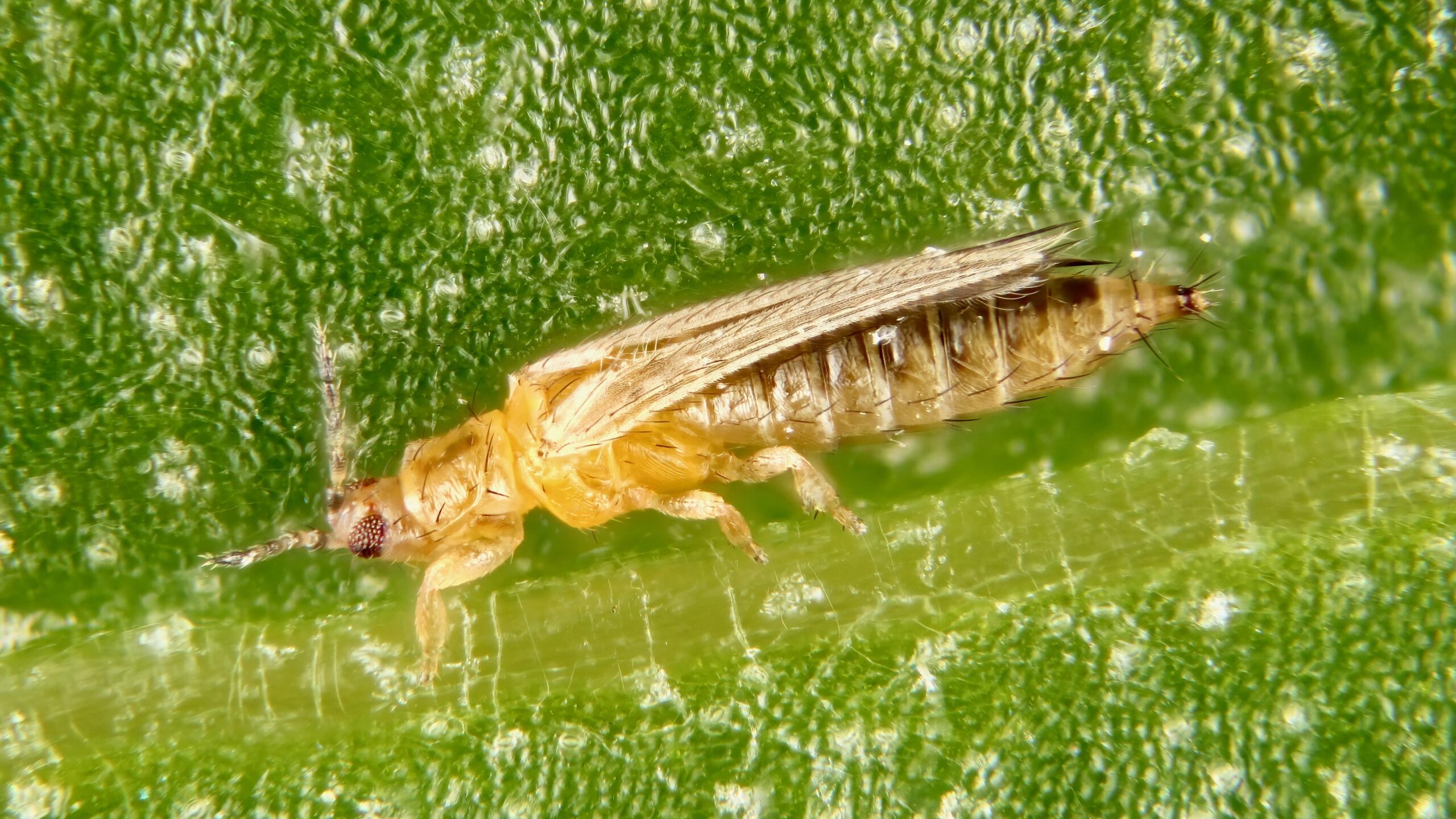
At first glance, the Partners II building on North Carolina State University’s Centennial Campus appears like any other academic building. But behind one of its many doors, researchers are battling a menacing virus by investigating its host at a molecular level so small and so finicky that no one has seen it before–until now. The host in question is the western flower thrips, a super vector that holds many secrets in its microscopic salivary glands.
Within the thrips’ salivary glands is a virus that has been replicating since the insect’s larval stage. The tomato spotted wilt virus (TSWV) is one of the top 10 most destructive crop viruses in the world, with over a thousand plant species susceptible to its infection. As it makes its way through a tomato plant’s cells, TSWV chokes the plant’s ability to store energy from the sun’s rays. Without photosynthesis, the plant is stunted. Visible signs of disease appear as ring spots on the tomato’s skin. TSWV even has the audacity to sully the tomato’s flavor, rendering it unsuitable for cans, sauces and pastes.
But TSWV can’t destroy tomatoes without an accomplice, or in this case, a chauffeur. Like many viruses, TSWV needs a living organism – what’s known as a vector – for it to be transmitted from one plant to another. Enter thrips: a slender winged insect no larger than a grain of sand. Thrips cause their own damage to plants by extensively feeding on leaves, flowers and fruit while at the same time delivering the virus into the plant to wreak havoc of its own.
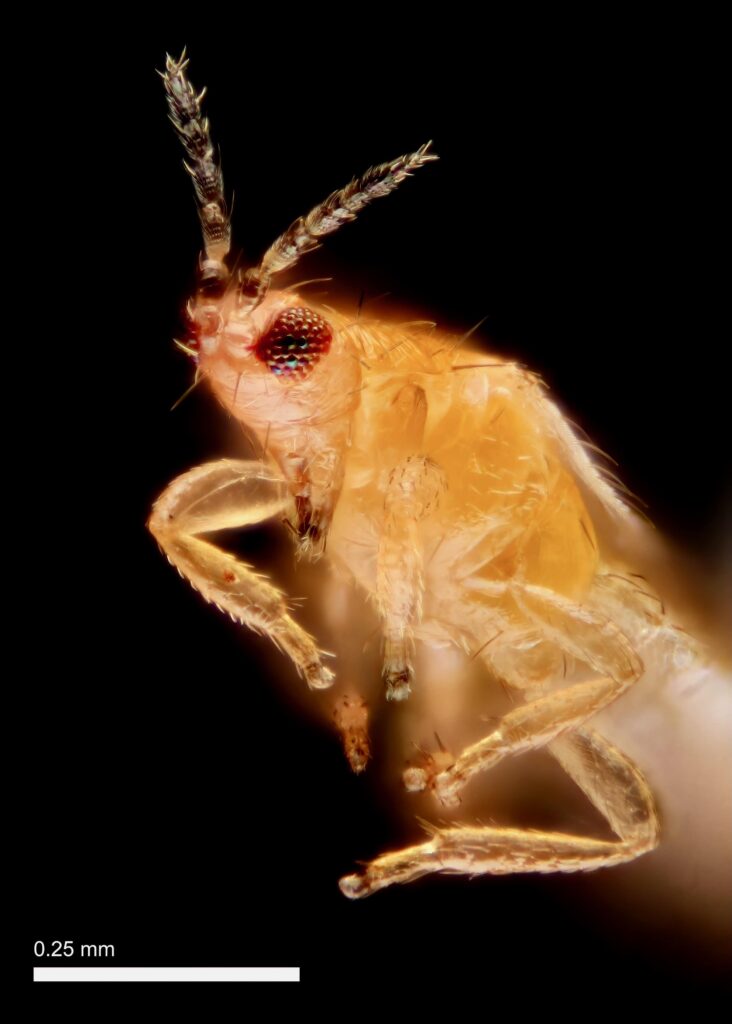
One way researchers have combated TSWV is by breeding tomato plants with genetic resistance to the virus using a gene called Sw-5. But because this gene is so widely used in tomato farming, the virus is becoming resistant to the resistance gene in the tomato as it rapidly mutates. In fact, two resistance-breaking variants of TSWV were identified on North Carolina farms last summer. That genetic resistance builds up in the virus population, rendering the Sw-5 gene more or less obsolete.
The other way to control TSWV is by addressing the vector, most commonly with insecticides. But just as with the gene resistance in the virus, the vector develops insecticide resistance, which gets passed down to future generations, rendering insecticides more or less obsolete.
With limited options at the farm level, NC State researchers are digging into this plant-vector-disease interaction behind closed lab doors. Dorith Rotenberg, a professor in the Department of Entomology and Plant Pathology, and her post-doctoral researcher Priya Rajarapu make a dynamic duo in the lab. Together they’ve uncovered groundbreaking findings about TSWV and its effects on the western flower thrips.
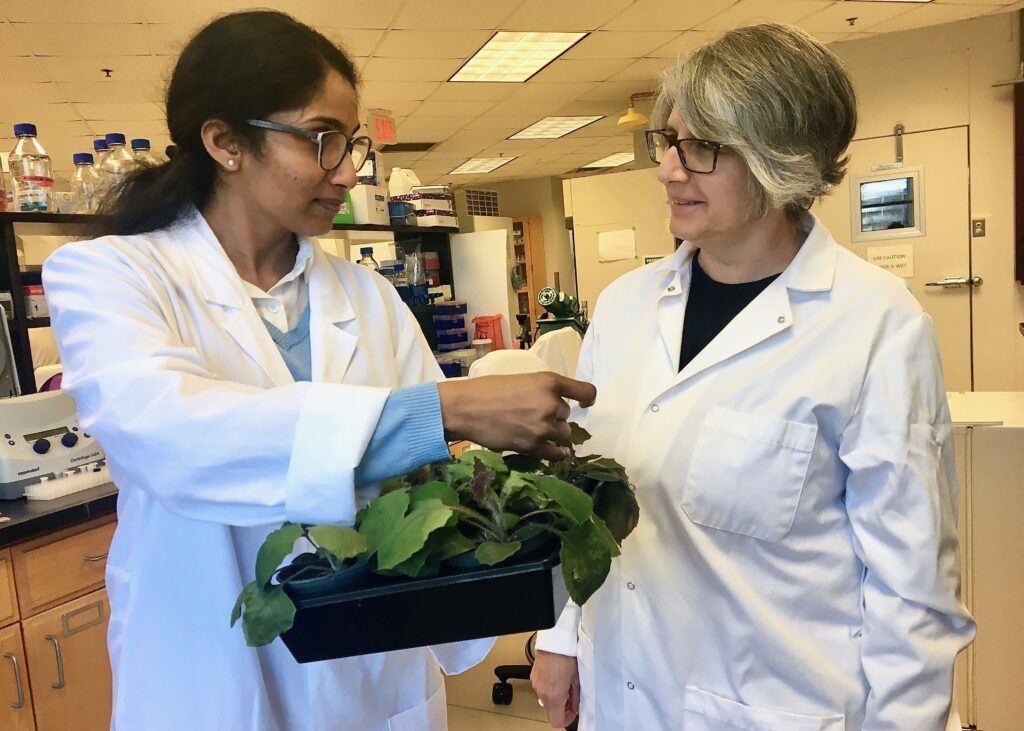
“In a normal life cycle, uninfected male thrips don’t feed much. Earlier research has found that infected males seem to feed more. Studies also show that infected males are more efficient transmitters than females because they likely cause less cell damage. Females suck up the entire cell content, so there might not be a living medium for the virus to propagate in, whereas males just taste and walk around,” Rajarapu explains.
Thrips also exhibit poor manners; they spit when they eat. Rotenberg and her team hypothesized that saliva was therefore the primary mode of transportation for the virus into the plant. This led Rotenberg and Rajarapu to narrow their investigation to the thrips’ salivary glands to determine how the virus changes its host to create a more conducive environment for its survival. Rajarapu says no one has seen thrips salivary glands’ molecular biology let alone the impacts of a viral infection on its proteins because thrips are so small.
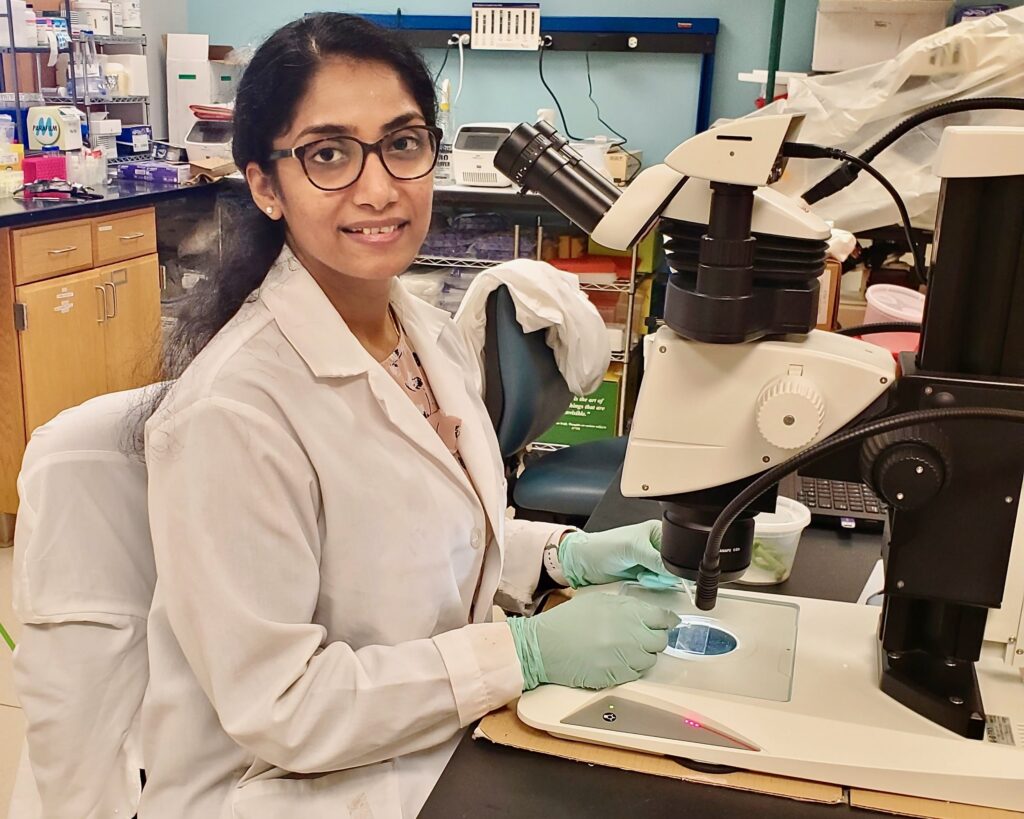
“Nobody believed we could do it. But we were funded by USDA because the panel of expert reviewers believed that we could achieve these goals based on our experience working with thrips and TSWV,” says Rotenberg. “[Our success] is something we really attribute to Priya’s surgery and very precise hands.”
To get at the minuscule salivary glands, Rajarapu built her own surgical tools, starting with deer hair, then eyelashes, before finally landing on the paintbrush hair she hot-glued to a pipette tip. With her homemade surgical implement in hand and her eyes fixed through the microscope, Rajarapu can perform 50 to 100 dissections in an 8-hour day.
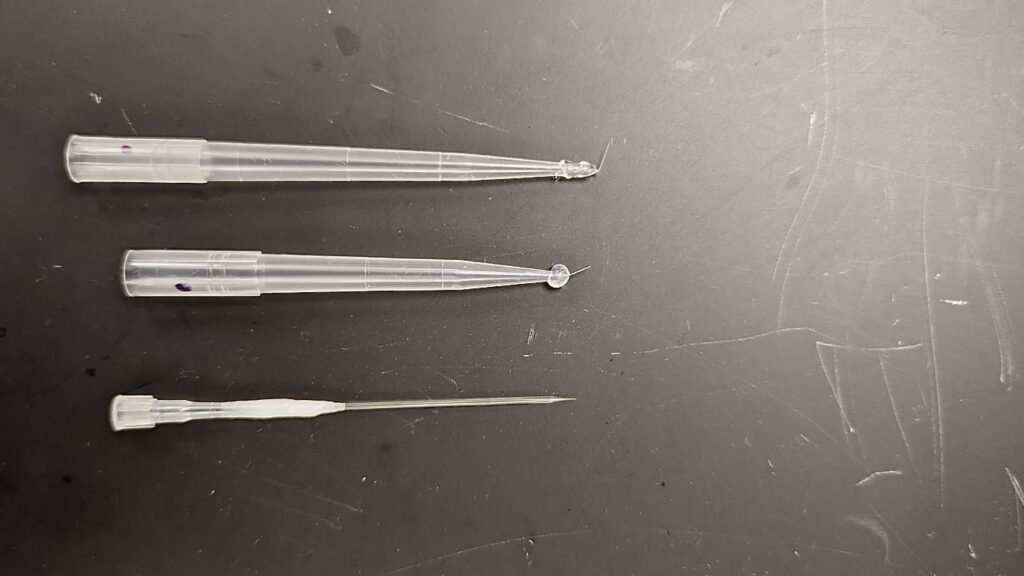
MacGyvering a thrips surgery solution paid off. They found that the virus infection is very different between males and females at the protein level, with even more proteins responding to the infection in males than in females. The discovery of a sex-biased interaction between TSWV and saliva proteins, as described in their recently published paper, is the first of its kind in any thrips species.
The next step after gaining a better understanding of the virus-vector relationship is to explore the vector-plant relationship.
“We’re trying to figure out if thrips have proteins that either mount a defense by plants against the insect or suppress defense by plants against the insect. If we can understand some of the genetic basis of host resistance to thrips, then maybe we could capitalize on that,” says Rotenberg.
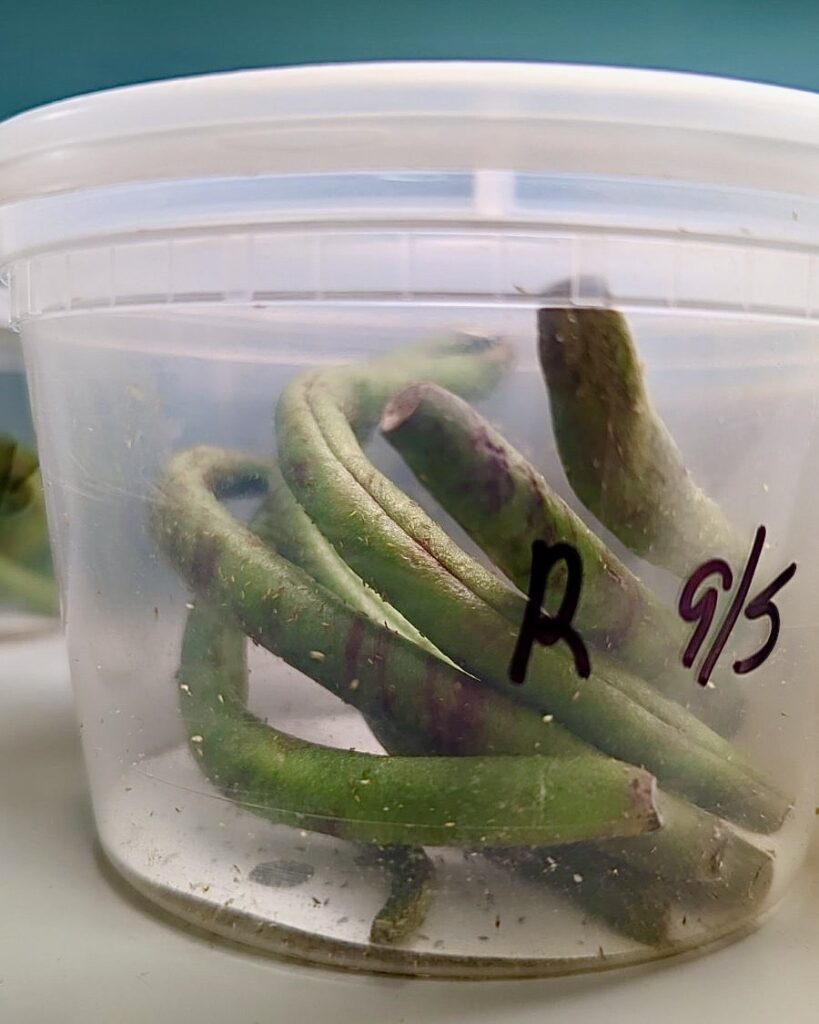
None of this research would have even been possible without Rotenberg’s previous work sequencing the thrips genome. The ability to identify salivary proteins altered by the virus relies heavily on that genetic database. By understanding how the virus interacts with the western flower thrips, they can now apply those learnings more broadly to other thrips species in their battle against TSWV.
“We’re always trying to think of ways we can disrupt the interactions between thrips, virus and plants. Any kind of knowledge can help us achieve that goal toward disease control,” says Rotenberg.
Diane Ullman, a Distinguished professor of entomology in the Department of Entomology and Nematology at the University of California-Davis, is the lead PI on this project.


